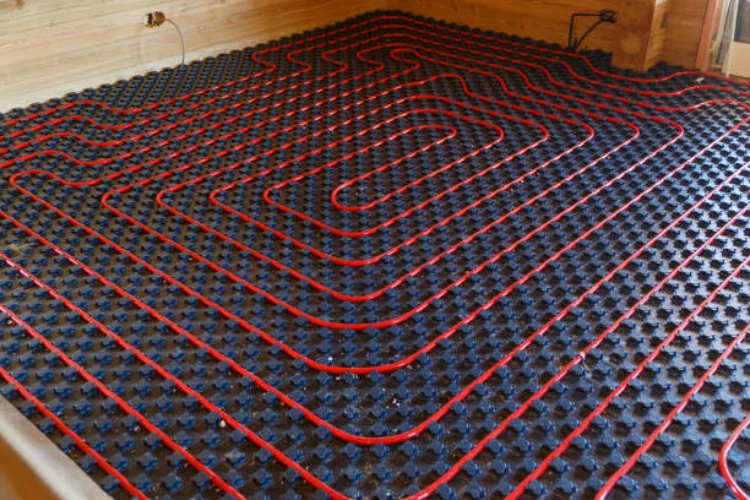Introduction:
PEX pipes have gained widespread recognition in the plumbing and construction industries for their versatility, durability, and cost-effectiveness. However, comparing them to traditional pipe materials like copper and PVC provides valuable insights into their respective advantages and limitations. In this article, we delve into a comprehensive comparative analysis of PEX pipes against traditional pipe materials.
1. Material Composition:
1.1. PEX Pipes: PEX pipes are made from cross-linked polyethylene, a thermoplastic polymer that undergoes a chemical process to enhance its strength and durability. PEX pipes are flexible, allowing for easier installation and reducing the need for additional fittings and joints. They are resistant to corrosion, scale buildup, and chemical degradation, making them suitable for various plumbing and heating applications.
1.2. Copper Pipes: Copper pipes have been a staple in plumbing systems for decades due to their excellent corrosion resistance and thermal conductivity. However, copper pipes are rigid and require skilled labor for installation, resulting in higher labor costs. Additionally, copper pipes are susceptible to theft due to their scrap value, posing security concerns for homeowners and contractors.
1.3. PVC Pipes: PVC pipes, made from polyvinyl chloride resin, are lightweight, cost-effective, and resistant to corrosion and chemical damage. However, PVC pipes are rigid and prone to cracking or breaking when exposed to freezing temperatures or impact. They also have limited flexibility, making them less suitable for applications where maneuverability is essential.
2. Installation and Maintenance:
2.1. PEX Pipes: PEX pipes offer significant advantages in terms of installation flexibility and ease. They can be bent and curved around obstacles without the need for additional fittings, reducing the risk of leaks and minimizing installation time. PEX pipes require fewer connections, lowering the potential points of failure and reducing maintenance requirements over time.
2.2. Copper Pipes: Copper pipes require meticulous soldering or brazing during installation, which demands skilled labor and specialized equipment. Improper installation techniques can lead to leaks and costly repairs. While copper pipes have a long lifespan and minimal maintenance needs, their initial installation costs and susceptibility to theft may deter some homeowners and contractors.
2.3. PVC Pipes: PVC pipes are relatively easy to install due to their lightweight and simple jointing methods, such as solvent welding or compression fittings. However, PVC pipes may degrade over time when exposed to ultraviolet (UV) light or extreme temperatures, necessitating periodic inspections and potential replacements. Additionally, PVC pipes require proper support to prevent sagging or deformation over time.
3. Environmental Impact and Sustainability:
3.1. PEX Pipes: PEX pipes are considered environmentally friendly compared to traditional pipe materials like copper and PVC. They require fewer resources to manufacture, emit lower levels of greenhouse gases during production, and can be recycled at the end of their lifespan. PEX pipes also have excellent thermal insulation properties, reducing heat loss and energy consumption in heating systems.
3.2. Copper Pipes: While copper is a naturally occurring metal and can be recycled, the mining and refining processes required to produce copper pipes have significant environmental impacts. Copper mining operations can lead to habitat destruction, soil erosion, and water pollution. Additionally, the energy-intensive production of copper pipes contributes to carbon emissions and resource depletion.
3.3. PVC Pipes: PVC pipes raise environmental concerns due to their reliance on non-renewable fossil fuels in their manufacturing process. PVC production releases toxic chemicals such as dioxins and phthalates, posing risks to human health and the environment. Furthermore, PVC pipes are not biodegradable and can release harmful substances when incinerated, contributing to air pollution and landfill contamination.
Conclusion:
In conclusion, while each pipe material has its advantages and disadvantages, PEX pipes offer a compelling combination of flexibility, durability, and sustainability compared to traditional materials like copper and PVC. PEX pipes’ ease of installation, minimal maintenance requirements, and environmental benefits make them a preferred choice for modern plumbing and heating systems, contributing to more efficient and eco-friendly construction practices.
Contact
IFANPLUS is a specialized product series launched by IFAN, primarily covering plastic pipes, fittings, and various types of valves. We offer PPR and PVC pipes in German and American standards, ensuring the high quality and reliability of our products. IFANPLUS valve products include a variety of valves, from PPR valves to other diverse copper valves, catering to your specific requirements. Whatever product you need, IFANPLUS will be your reliable partner. Here is our contact information.
We will reply your email or fax within 24 hours.
You can call us at any time if there is any question on our production.
For more information,pls visit our webside https://www.ifanplus.com/
Pls Mailto: [email protected]






